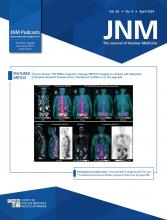Abstract
Since the introduction of radiolabeled prostate-specific membrane antigen (PSMA) positron emission tomography/computed tomography (PET/CT), the ability to visualize recurrent prostate cancer has improved substantially. However, the diagnostic accuracy of radiolabeled PSMA PET/CT in patients with biochemical persistence (BCP; i.e., persistently measurable prostate-specific antigen (PSA)-values after robot-assisted laparoscopic radical prostatectomy (RARP)) is largely lacking. Therefore, the aim of this study was to determine the role of PSMA (i.e.,18F-DCFPyL or 68Ga-PSMA-11) PET/CT imaging in patients who experience BCP after RARP and to evaluate the sites of persistent disease on PSMA PET/CT. Methods: A total of 150 consecutive patients with BCP after RARP who underwent radiolabeled PSMA PET/CT imaging were retrospectively evaluated. BCP was defined as any detectable first serum PSA-value after RARP (≥0.1 ng/mL) at least 6 weeks after surgery, in the absence of an undetectable PSA-value after RARP. A multivariable logistic regression analysis was performed to identify predictors for the detection of metastases outside the prostatic fossa (≥miN1) on PSMA PET/CT. Results: A PSMA PET/CT was performed at a median PSA-value of 0.60 ng/mL (interquartile range (IQR) 0.3-2.4) after a median period of 6 months (IQR 4-10) following RARP. In total, 101/150 patients (67%) had lesions with PSMA-expression on PET/CT, of which 89/150 patients (59%) had lesions with increased PSMA-expression sites outside the prostatic fossa. Moreover, 39/150 patients (26%) had PSMA-positive lesions outside the pelvis. On multivariable analysis, higher PSA-values after RARP (P = 0.004) and positive pathological lymph node status (P = 0.006) were independent predictors for ≥miN1. Conclusion: In presence of BCP, a high proportion of patients already had metastatic disease to pelvic lymph nodes or showed evidence of distant metastases, as indicated by PSMA PET/CT. Higher PSA-levels after RARP and positive pathological lymph node status were significantly associated with metastases outside the prostatic fossa. In conclusion, in patients with BCP, PSMA PET/CT imaging is warranted to guide (salvage) treatment strategies.
- Copyright © 2020 by the Society of Nuclear Medicine and Molecular Imaging, Inc.







